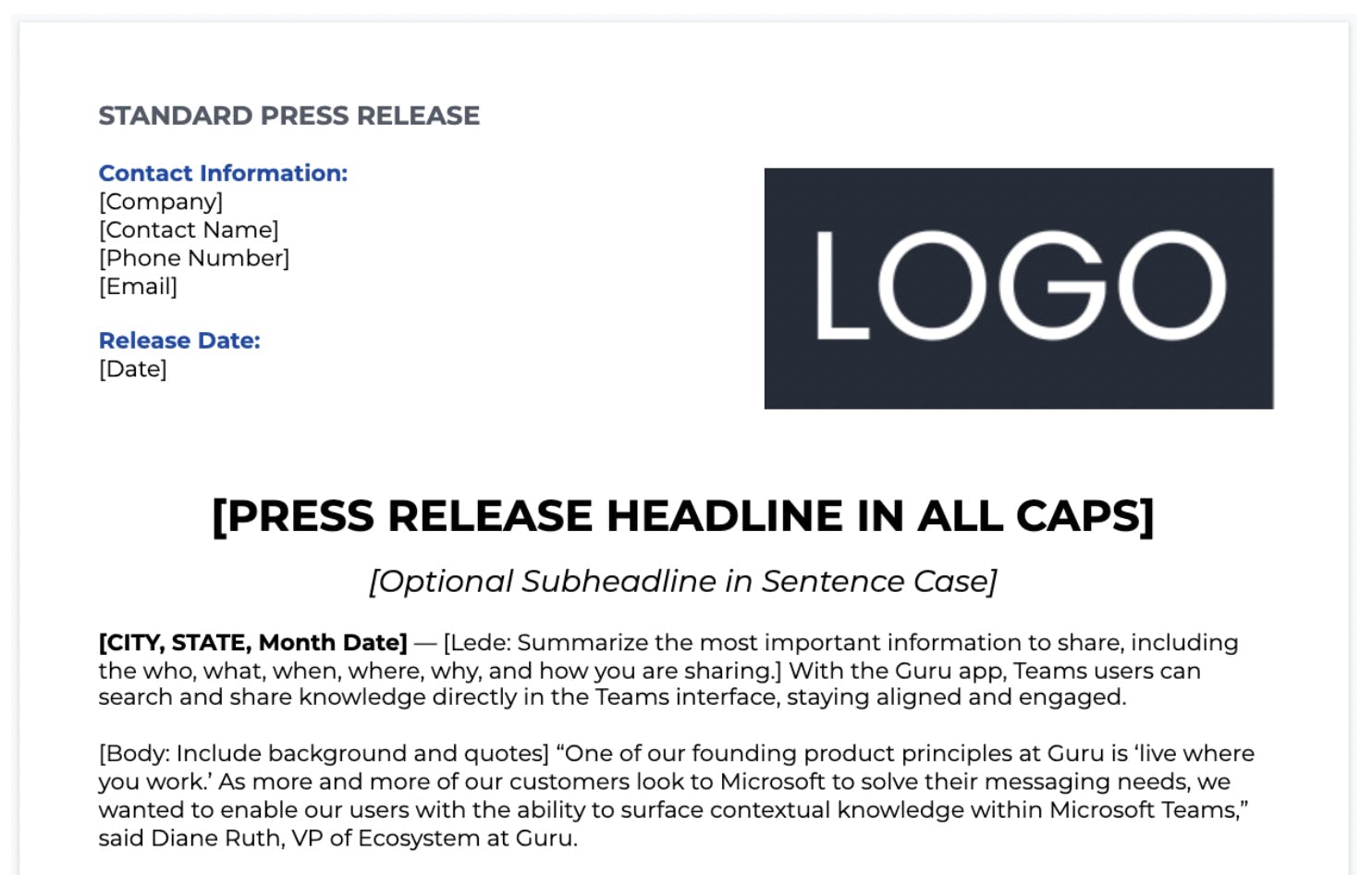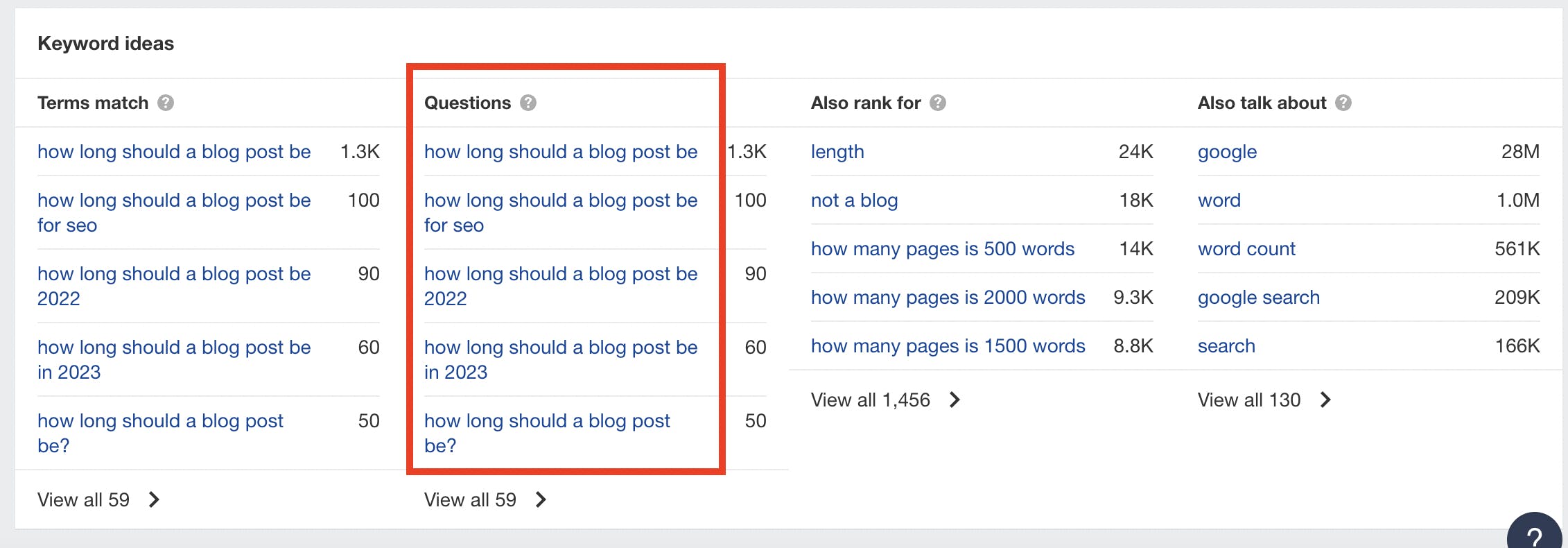A common query that content creators often grapple with is: What should be the length of a blog post?
It seems as if there's a magic word count that, once achieved, will pave the way for organic traffic, social shares, and high rankings in search engine results.
But is it really as simple as that?
Let's delve into this subject to demystify the concept.
How Long Should a Blog Post Be?
The perfect size for a regular blog post is usually somewhere between 1,500 and 2,500 words. This does not mean that each write-up has to fit into this range since content targets and reader expectations can significantly affect the length of your article.
Depending on what you’re trying to cover in your average blog post, such as an extensive guide or just some tips about something simple - it may be appropriate either for long or short writing pieces, respectively, with priority given to producing engaging material which responds well to queries by visitors and readers search whilst providing unique points of view raising its value above others around the web.
Does the Length of a Blog Post Really Matter?
The quality of blog posts is more important than the length, as it has an influence on engagement. Instead of striving to reach a certain word count, put emphasis on producing relevant and interesting content that meets audience requirements.
Many components have an effect on determining how long each blog post depends or should be, such as what goal you want to achieve with it, who your target viewers are and why people would even be looking for this type of information in the first place. It’s not about quantity over quality. Instead, focus solely on creating exceptional content.
What Is the Ideal Blog Post Length for SEO?
When it comes to optimizing blog posts for SEO purposes, the optimal length is based on the subject and competition. The best way to determine how long a blog post should be for SEO is to analyze the length and structure of the articles currently ranking on Google for your chosen keyword(s).
As average post length and size increase, so do organic views and backlinks, which helps with SEO effectiveness. But don’t just write longer and extensively just for that reason alone - any content needs to meet readers’ relevancy and focus requirements while still keeping its quality standards high.
The Optimal Blog Post Length for Various Content Types
Ideal blog length: post length is not a one-size-fits-all solution. Different content forms require shorter blog posts of varied lengths to ensure successful message communication. These types include pillar pages, lists, how-to guides and press releases requiring distinct word counts for optimum delivery.
How long should a pillar page be?
A pillar page is a comprehensive guide that serves as the primary foundation for interconnected blog posts. It links back to other blog posts and articles relevant to its topic, building a strong content network overall. This kind of web page typically spans several thousand words long to provide all-encompassing coverage about its subject matter – so if you’re thinking about a pillar post or writing one be prepared to go into much detail and furnish an abundance of information!
How long should a listicle be?
Creating a listicle blog post with an ideal length of around 2,500 words can effectively engage readers. This number allows for providing comprehensive info and relevant examples internal links or visuals that keep interest high. It’s recommended that 5-15 items are included in each post not to overwhelm readers, but still provide them with ample knowledge on the topic.

How long should a how-to guide be?
When crafting a how-to guide, consider the complexity of the subject matter and your reader’s understanding. For simple instructions, brevity should do. When more detail is needed for an involved task, it might be wise to go up to 1,500 - 2,500 words long. Assess all these elements before you start writing, as this will help create concise yet comprehensive content that appeals to readers effectively.
How long should a press release be?
A press release should be an informative and succinct overview of a company’s updates or news, normally between 300-400 words. When composing one, the writer must include a catchy title, pertinent facts, and contact information for inquiries from media outlets. The main idea here is to provide essential details in as few sentences as possible while maintaining its message effectively delivered throughout the text body.

How To Determine Your Blog Post Length in 3 Steps
When it comes to pinpointing an ideal length for your blog post, there’s no need to guess. By following a simple 3-step plan, you can determine the optimal size to satisfy your goals and reader expectations.
1. Establish your goal
Before beginning to write, it’s essential to specify your precise goal for your blog post. Establishing what you want out of the content assists in aligning it with its intended purpose.
Whether aiming to amplify brand recognition, bring more visitors, generate leads, or educate your readership, ensure that this whole target audience is considered within the length of each article. For instance, an informative project may need longer posts so as to cover topics thoroughly. Meanwhile, objectives like amusing and influencing can lead to shorter blogs instead.
2. Define your audience
A firm understanding of your readers is an indispensable part of forming the ideal blog post content length. The size of your perfect blog post length should accommodate the skill level of those you’re targeting with it.
People with great proficiency on the topic might be partial to longer articles and more comprehensive blogs and blog posts. Conversely, for folks ready to make a purchase, shorter copy could work better. So being aware of whom you are aiming this content at will help personalise what’s said so that their demands and interests can be satisfied.
3. Focus on search intent, not word count
When determining post length for your blog, prioritize search intent instead of only focusing on a particular word count. Such an approach can help improve the quality and relevancy of blog content by satisfying searcher expectations and engaging them more effectively. There are many tools available, such as Ahrefs, Google Trends, Moz Keyword Explorer or Google Keyword Planner, that will assist you in recognizing user motives behind their queries, thus enabling higher rankings on major search engines like Google. Utilizing these resources also helps to raise visibility when users make specific searches using keywords associated with the blog post or topic covered.

4. Analyze what's currently ranking
Finally, assess the content of top ranking post that is currently high-ranking. By studying the length and depth of successful pieces, you can better understand how long your blog post should be to reach comparable objectives.

Key Takeaways
- The ideal blog post length depends on the content goals, audience needs and search intent.
- Various types of blog posts can range from 300-4000 words depending on complexity and intended audience.
- Establish a goal, define your audience, focus on search intent & analyze current rankings to determine the optimal length for maximum engagement.
Final Words
When it comes to figuring out the best size for your blog post, there isn’t one simple, quick answer either. It’s all about balancing between satisfying visitor requirements, matching search intent and fulfilling content objectives. When writing long-form content, your main aim should be providing useful information that resolves any questions or issues – instead of how many words you use (500 or 2500). So, focus on crafting excellent quality material that is captivating and relevant so as to meet its purpose. This will also determine an appropriate length automatically.
Pinpointing the perfect length for a blog post is more of an art than a science. It demands understanding your reader’s necessities, their search query goals and what you aspire to achieve with this content. Regardless of whether it’s creating a pillar page or press release or setting out instructions on how to do something, the length of a good blog post should accommodate its purpose while providing an advantage to those reading it. As such, rather than concentrating solely on achieving any particular word count target. Focus instead on delivering high-quality, pertinent material that stands apart from other posts online!
Frequently Asked Questions
What is the ideal length of a blog post?
When discussing ideal blog post length, the general consensus is that it should be between 1500 and 2000 words. For certain promotional content marketing tactics, some suggest shorter posts of 500-750 words.
Is 500 words too short for a blog post?
500 words is an acceptable length for a blog post; in fact, variety in ideal blog post lengths can be a great way to engage readers long form blog posts.
How long should my first blog post be?
As a benchmark to aim for, most blog posts should have average word count of between 1,500 and 2,000 words. Refer to what is currently ranking on Google when considering the ideal word count for ranking blog posts on your blogs.
Does the length of a blog post affect its SEO performance?
Longer blogs tend to have a higher ranking in search engine results and improved reader involvement. Specifically, blog posts of greater length perform better regarding SEO performance with regard to the specific post, keyword ideas as well as the overall how-to blog posts.
Does the type of content affect the ideal blog post length?
The ideal blog post length varies depending on the type of content, few examples such as a pillar page, which should be 3,000-4,000 words long, and a listicle of around 2,500 words. For how-to posts, they suggest 1,500-2,500 words, whereas press releases are meant to keep within the 300-400 word range. Thus, ensuring that each post's word length meets its appropriate size is essential when it comes to blogging successfully.








